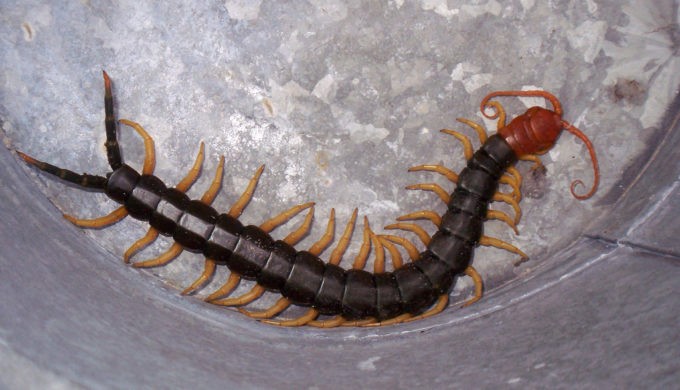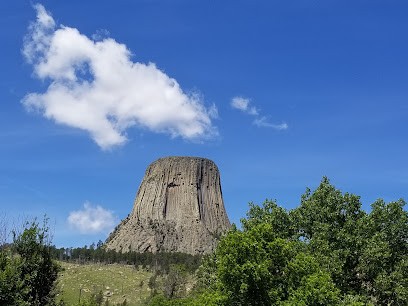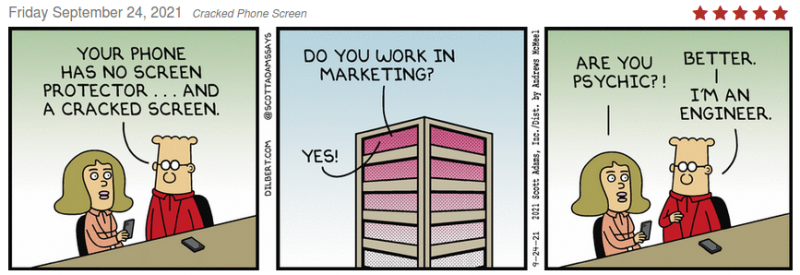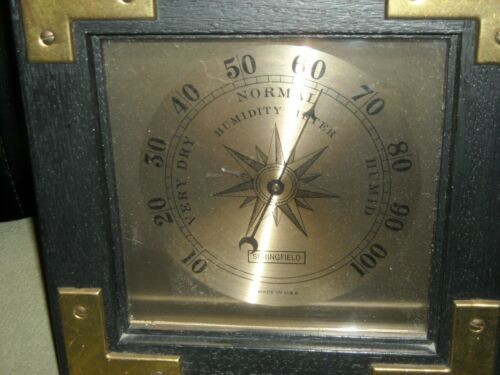-
Posts
5,842 -
Joined
-
Last visited
Content Type
Forums
Detector Prospector Home
Detector Database
Downloads
Everything posted by GB_Amateur
-
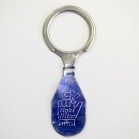
More Silver Today And A Weeks Worth Of Finds
GB_Amateur replied to Dan(NM)'s topic in Metal Detecting For Coins & Relics
One advantage to driving across country to get to the Western USA gold fields is all the towns I pass through (particularly when not driving Interstate highways). Sometimes I just 'cold call' (as Dan puts it), when I see a sign or actual park/school. Better is to use Google Maps the night before, looking for parks/schools in towns I'll be passing through the next day. So far this hasn't paid off better than a few Wheaties and lots of modern coins. Searching unhunted parks and schools doesn't mean the oldies are going to jump out of the ground.... In some cases I'm pretty sure I'm not the first. But as Dan notes, you don't know until you try. -

Close Encounters Of The Third Kind
GB_Amateur replied to Skookum's topic in Detector Prospector Forum
While working in East-Central New Mexico desert we came across some small (maybe 1/2 inch long) scorpions. When we brought them up to our Texas colleagues they said: "their venom is nothing compared to our centipede's." I was staying in one of those gereric roadside motels ("no tell motel") and that very night awoke needing to use the restroom. I debated whether or not to turn on the light, not wanting to blast my dark-adjusted eyes to that, but decided I would. Barefoot, I entered the bathroom and right in front of the toilet was one of these. -

Beach Season Has Begun
GB_Amateur replied to schoolofhardNox's topic in Metal Detecting For Coins & Relics
Well, for most of us. But I thought you preferred those windy, sub-freezing winter days.... Bet you won't have any competition when those show up. From the looks of the front edge of that shovel's blade, it's seen considerable use. Do they make this style with a fiberglass handle? Too bad at least one of those rings wasn't gold. But I'm sure you're just getting started so the goodies are just around the corner. Addendum: looks like I was responding to a week-old post. Has the weather turned into the schoolofhardNox variety, yet?- 206 replies
-
- 1
-

-
- coin detecting
- minelab equinox
-
(and 1 more)
Tagged with:
-

The Garrett AT Max And Aluminum Siding
GB_Amateur replied to mh9162013's topic in Garrett Metal Detectors
I guess it's where you set the 'discriminator' on the 'expert' scale. Soil and targets are part of the settings input. So is trash distribution, trash type, depth of good finds, location of good finds, difficulty in digging due to ground type (clay vs. sand, depth of vegetation, etc.).... But, yes, you've got to fit your hunt into the time available. Now that you have permission to hunt more, I predict better results. -

The Garrett AT Max And Aluminum Siding
GB_Amateur replied to mh9162013's topic in Garrett Metal Detectors
You've gotten a lot of good advice and there's nothing new I can really add. The one thing that jumped out at me is that you had (only) 2 hours to detect that site. But it sounds like you can go back, so that's good. It takes me more than 2 hours just to figure out where I want to hunt and what settings (and coils) I want to use. Sheet metal (both aluminum and iron -- aka 'tin') are really annoying. Even if you can distinguish between them and good targets by sound, extent, etc. they tend to have such a zone of influence that leaving them in the ground leads me wondering what small goodie is hiding under or nearby that's getting completely overpowered. With really short times to detect trashy sites, probably the best strategy includes moderate gain, high discrimination (above Zincolns and aluminum screwcaps), and ignoring the strongest signals. But all of those compromises will leave good targets in the ground. -
Good job doubling up (SD & WY) on your trip, Gerry. If there is metal detectable gold in range, you're going to get it. Given you made it to South Dakota's most famous tourist attraction, I'm surprised you didn't get a selfie at one of Wyoming's -- Devil's Tower. You must have been pretty close to it since it's in NE corner of the state (~25 miles north of I90?). You have an open invitation to search for gold here in Indiana. Unfortunately (besides the long drive...), metal detectable gold is a tough find and I don't have any special knowledge of how to get you over it. Now if you bring a discriminator and a snorkel that may be a different story....
-
Not exactly relevent to detecting, but we've discussed this dichotomy before. (Found at this official website.)
- 1 reply
-
- 8
-

-

-
Not just Dan(NM) that's discovered virgin ground (silver coin patch in his case). It's like I'm reading my old Treasure Found magazines from the 1980's! Just the nuggets around that centerpiece would make most detectorists week/month/year (/decade?).
-

A Tenderfoot’s Tale - Part 2
GB_Amateur replied to Old Line Paul's topic in Metal Detecting For Coins & Relics
There are many reasons coins end up at the depths they do. If you think too simply you may end up (mentally) discriminating out the ones you want. I've found Mercury dimes at less than 2 inch depth multiple times. I've been disappointed to dig down 7-8 inches only to be rewarded with a modern coin. Rule #1: every rule has its exceptions. Rule #2: (see Rule #1). Again, there are many reasons coins end up where they do. For sure it takes a human being carrying a coin somewhere (pocket, purse,...) for starters. Spectators have coins and lose them. Participants (players, officials,...) in sporting events have coins and lose them. Children lose coins. Adults lose coins. Heck, maybe even pets! Look for patterns but don't put too much confidence in that. Sometimes the most out-of-the-way spots will produce and the obvious ones won't. But if you do find a coin, search carefully around that spot. It might just be a random drop but it also could be due to that place being a frequent hangout where more coins have been lost. It's good to ask yourself and others questions. Pile up the data from experience and you'll be a better detectorist. Just don't take anyone's answer (including your own) as "the truth, the whole truth, and nothing but the truth." Constantly revise your hypotheses as new data presents itself. Regarding target ID as a function of metallic composition, here is something I wrote a couple weeks ago. That should help you understand where gold jewelry shows up on the TID scale. (Snyopsis: everywhere!) -
I'm salvating with envy. Kinda funny that the 'homework' you did wasn't what led you to this one. Nothing wrong with stumbling onto a spot and you had the smarts to realize it was worth a check. Jackpot!! 10 straight hours of detecting -- hope you had plenty of water. Texas must still be hot in mid-September. What is that crusty thing next to the silver GW quarter? IMO, you found a spot that has never been hunted. (Historic Aerials likely will tell you more.) I suspect the other baseball infield has been landscaped/backfilled and agree with your hypothesis that they just hadn't done that where you found the silver mine. Are there still parts of that site you haven't surveyed? Consistent with Raphis's post, I think you experienced time travel -- back to the 1970's and 80's when lots of school yards and muni parks were just laden with silver coins for the pickin'. I hope I find one of those someday.
-

Couple Of Finds With The Apex
GB_Amateur replied to kac's topic in Metal Detecting For Coins & Relics
Well, boohoo. I was going to suggest an Archimedes Principle specific gravity measurement which should fairly easily separate silver (/alloy) from platinum (/alloy). Much tougher to distinguish gold from platinum unless one alloy is a lot purer than the other. Maybe platinum jewelry is always very high content of platinum? Anyone know? Glad the Garrett Apex is working well for you. It needs some love after some of the reviews it got when it was released. -
You've got some juicy sites there, as can be seen what you've been finding. I'm envious! I see a clad half among the modern coins. Not of much value other than face, but those aren't common in my area. I've found four brass dollars but only one clad half. In my case it's probably partly due to previous coverage by other detetorists. Who passes over dTID's in the half dollar zone?? Dimes can get missed due to their size. Half dollars?
-
Wow, that is disappointing. Back when I was building (my own) computers from assembled components, NewEgg was my (and many others') go-to site. Their products were legit back then (basically first decade of this millenium is the time frame I'm referring to). I just hate it when a company I trust goes bad, but they aren't the first nor will they be the last. ? Thanks for the heads-up.
-
Here's the problem: the people who know what this key-shaped pendant is are too young to be on this website forum. Well, those of you who have children (or more appropriate -- grandchildren) can ask them. Hope its silver. The other ring is nice looking and also probably a fairly recent drop since the gold plating is still intact.
-

Unexpected "wheatfield" (updated)
GB_Amateur replied to GB_Amateur's topic in Metal Detecting For Coins & Relics
Interestingly there is a baseball field in this very park, and the Historic Aerial photos hint that it also may have been there (in a more primitive state) well before the 'official' 1974 park opening. I've yet to search it as I've been staying in the shade. This autumn and especially winter will provide plenty of cloudy, cool days to search there. Of course I'll let you both and everyone else here (who is interested in reading) know what I do or don't find there. One of F350P's post got me thinking the following: could this have been a recreation area for the employees and families of the company that owned it previously? It's certainly not out-of-the-question and if I do find oldies on the baseball field then that will add evidence to this hypothesis. Regarding kac's point, I also have found evidence (on a school grounds) that old fill dirt was hauled in which contained coins older than would be expected from just looking at the school's date of construction. -
Weren't you a White's dealer at one time? Why the Garrett Infinium over the White's TDI? Is there a concern about waterproofness? Cost?
-

Unexpected "wheatfield" (updated)
GB_Amateur replied to GB_Amateur's topic in Metal Detecting For Coins & Relics
The earliest photo of this area on the HA website is mid-50's. The land was an industrial storage site prior to it being turned over to the city for a park. Besides the building (site office?) shown on the mid-50's aerial photo there is another shown on near turn-of-the-century vintage USGS topo maps which I think is also now part of the park. So I think this entire 10 acres was industrial as far back as early 1900's and possibly earlier. Thus I don't think there was ever a residence here. (Across the street, yes.) I mentioned that later this year I'm going to investigate where that other building was located. And I have lots of other spots to check out but it's really where people hung out that leads to coin finds and it seems that's going to be a needle-in-a-haystack search once I complete detecting my current spot around the known building (shown in the aerials) location. -
Through most of 2020 I detected a large park which had been previously detected but still produced decent old coins for me. In one post I told of a well used path to a small waterfall which confused and frustrated me. The path (approx 150-200 m long) is right next to a creek ('stream' for you New Englanders ?) and it was likely used for watering cattle in the late 19th and early 20th Century. The path was hard packed gravel and crushed stone, occasionl larger pieces of limestone, with soil filled in between all that aggregate. This path gave thick iron response to the Minelab Equinox and produced almost no coins. (I do remember one Zincoln -- I would.) Back then I tried both the 11" stock DD coil and the 6" DD with similar results. With both coils I recovered shallow (meaning mostly within the first 1" depth) lead bullets as well as brass casings. Most were 22 cal. but a few were larger and those in particular I was able to date at over 100 years old. My conclusion is that this path was used by hunters prior to it becoming part of the park. So in summary, lots of small iron (nails and wire), as many bullets and casings as I cared to recover, but no coins. And the recovered targets were mostly located in the top 1 inch. Some time after my report, kac suggested returning with the Tesoro Vaquero and 8"x9" stock concentric (the only concentric I have for it presently). He and dogodog recommended setting the threshold to where Zincolns just break up. I found out from the park caretaker that the path is scheduled to be covered over completely with a boardwalk so if I was ever going to return, I better make it quick. A week ago I took his advice as well as kac's and doggo's. But in two hours of hunting with the Vaquero I recovered almost nothing. One lead bullet somehow snuck past the threshold and I think I got an aluminum can base, but specifically no coins and practically no trash either. I had been committed to using concentric coils only and took my Fisher F75 with its tiny 3"x6" concentric as a backup. Returning the the vehicle I swapped out the detectors and returned for 2 more hours. I only use silencing discrimination (and silencing masking) when I have no choice so I set the F75 up in Default process, 4H (4 tones with nickel zone joining the high conductor coins in the highest tone). Low tone is 0-15 which is nominally the entire iron range. With this detector I decided to dig anything 'interesting', at least at the start. As was the case in 2020 I immeditately started recovering lead bullets and brass casings, all very shallow as before. Two more hours and still no coins. I gave up. At the far end of this wooded path there is construction of a new paved path in the open area of the park. (I've bitched many times before that I hate these backfilling-party upgrades!) For the last hour of this session I decided to search near that path, also at or close to where I had hunted previously. All the coins found that day (just two clad dimes and two copper Memorials) were found in that last hour with the F75 and its tiny coil. Here are the coins I found that day and the next day (described below): The next morning I returned to search several dirt piles -- the dirt having been removed ("scraped off") so they could backfill the walkway with crushed stone before paving with asphalt. That 2.5 hour hunt was exclusively with the ML Equinox 800 and 11" coil with my standard park/school coin hunting settings. The dirt piles produced only a clad dime -- what a disappointment. For the last hour I just searched part of the park I had hunted previously. One wheat penny was in the ground up trunk of a recently cut down tree (not surprisingly with damage from the blades of that tool). The other Wheatie was in along a path I'm pretty sure I had detected previously, but was less than 2" deep and thus sounded like a shallow Zincoln. (Lesson to self: Be careful what you mentally reject digging....) Oh, what's that other thing? Near the end of the first day in a dirt pile I got a signal in the nickel zone of the F75 (25-35 on the 0-99 scale) and thought maybe it was in fact a nickel. Imagine my disappointment when it turned out to be a 10kt gold child's ring weighing 0.43 g. (still about $10 in gold content at today's price). That's my first gold jewelry find since December of 2018. Ignoring the foil and pulltab ranges has its advantages... and its downsides. Finally, the non-valuable non-ferrous finds over these two days. The finds along the 'noisy' path to the waterfall (4 hours of the 7.5 hour total) are the lead bullets and brass casings, the aluminum bracket at far upper left corner, the chrome plated strap clamp (off womens clothing?), and the two items right above it -- one a small cap (but not bottle cap) and the other a small gear, possibly from a clock. To the right of those, also found along the wooded path, is heavy gauge copper wire wrapped around a fine gauge copper wire -- something electrical I guess. Everything else was from the rest of the (open) area I hunted over those two days. The tag with printing is religious and not old. Note the interesting toy cannon from a WWI(?) playset. I have no idea what those two embossed mating pieces (pot metal?) to the right of the toy gun are. That rectangle at the lower left is some kind of nametag, etc., not a buckle. Lower far right is a thick amber glass jar piece, probably part of a canning jar. Crown cap is pre-plastic liner era (I seldom find those as they rust away over 50+ years). Upper left is a decorative knob off of a piece of furniture. Finally the upper right -- what this was doing in a pile of scrape-off dirt at a park I have no idea. Here's a picture of a nearly identical piece I found googling: And some info on the company that made it: I'd much rather be showing you pictures of early coins, especially silver, and I'm sure you would, too, but the earlybird detectorists got those worms, leaving the decaying insects for me.
- 6 replies
-
- 14
-

-

-
- fisher detector
- tesoro detector
-
(and 1 more)
Tagged with:
-

Unexpected "wheatfield" (updated)
GB_Amateur replied to GB_Amateur's topic in Metal Detecting For Coins & Relics
I've gotten in 4 sessions (totaling 10.5 hours) in this park since my initial post above. Here's a photo of the coin (plus one jewelry) finds: All but the leftmost column are modern coins. There is one Canadian nickel dated 1982 to the right of the silver lyre. I've only recovered about a dozen Canadian coins (two are fortunately early 20th Century -- silver dime and large cent) in the 1200+ hours since I've been keeping records. Note that now Jefferson nickels are showing up. Previously I had pointed out I had found only a couple. The trend of a high Wheat/Memorial(Cu) ratio has dropped drastically. The LH column contains the 3 Wheaties I found in these recent four sessions. But, two other coins in that column show the age of this site even better than the Wheat ratio. The top coin is a 1937-D (four legged ?) high grade Buffalo nickel with a very solid full date. And, yes, that Roosie is silver -- 1947-D. The lyre is marked 'sterling'. I don't know if this item has some special meaning -- looks like it was either from a charm bracelet or possibly a neckace. Here are non-ferrous finds that aren't the typical trash (but those shortly): The broken clear glass embossed piece is quite thick (~1/4 inch). Typically glass that thick was not throw-away but meant to be reused. Two gaskets/washers, one copper and the other aluminum. The small brass/bronze bell (which previously contained a iron (alloy) clapper now rusted away) is interesting and I don't know what it was used for. Christmas decoration? The white chunk is lead, which I seldom find that color (from oxidation?). The disk is also lead. The electrical part is a two prong 120 VAC adapter for screwing into a light socket. Everything there looks like mid-20th C., IMO, but could be older (such as the wine bottle glass) or newer (key, electronic lug, cable/conduit clamp). Finally the typical trash -- this was from one 3 hour hunt: The only thing that stands out as old is the square nail next to the screw/bolt in lower right. That could easily be first half of 20th C. Even though modern round cross-section nails were availble back in the 19th C., square nails were still used even as late as the 1930's Great Depression when nothing usable was discarded. So, what are my current thoughts on the history of this site? I'm narrowing it down to two hypotheses -- either the park was active as a park some years before the brass plaque's official date (1974) or the industrial site's workers spent some of the free time (e.g. lunch hours) sitting on the slope behind the building that aerial photos show was there at least back in the mid-50's. I've only scratched the surface (literally and figuratively) of this site. I expect I'll be there many more times before the year is up. Early 20th C. USGS topos show another building which I'm hoping is in a (huntable) cleared area. Stay tuned. -
No, I've gotten a little more reserved in my detector buying. I finally realized (after having it drummed into my head but ignoring the advice) that owning a detector is only the beginning, easy part. Learning to use a detector, figuring out its nuances, treating it like a musical instrument that is only as good as the musician playing it. Those things take a lot of time (in the field), at least for me. Yes, that was a good deal and I much prefer the ladies' version (pink) to the macho, macho man green. But I still have the Gold Bug Pro -- too many good memories to ever get rid of that one -- and it only lacks a few features of the G2+/F19/TRP. If I get the itch I can revert to firing up the GB_Pro and the memories come pouring out.
-
Good on you for asking questions on how to improve. However you may be getting ahead of yourself. Regarding becoming a top golfer, Jack Nicklaus is credited with saying (paraphrased) "first learn how to hit it long; figuring out how to hit is straight comes later." IMO, metal detecting's equivalent goes something like this: first learn how to dig everything; later you can figure out how to avoid digging some of the trash. Note I said 'some'. Anyone who digs none of the trash is leaving goodies for the rest of us, and we should thank them for that. A good tip I learned early on (from reading advice just like you're getting here) is to mentally predict what you will dig up and then see if you got it right. I still do this all the time. But don't ever think you've got it completely figured out. "For every rule there is an exception" and that was never more true than at metal detecting. Try out the 'tricks' and techniques you read about here, but use that to make your prediction and then dig the target anyway, regardless. That feedback will allow you to teach yourself. For my last cliche' of this post: "There's no sustitute for experience."
-
Great report, Simon, and congrats on finding a 0.1 grain(!) 'grain' with a 6"x10" coil. (I don't think that even qualifies as a picker, it's so small.) Of course we all (and obviously you in particular) hope for much larger ones. ? It's gotta be a plus to have a detector which can be fitted with either a DD or a concentric (or Mono in the case of PI's) as the conditions warrant. I'm glad White's and Garrett never forgot that. It's going to be very interesting to watch as Garrett and NEL/CORS produce more coils for this detector and detectorists like you and Steve H. figure out how to maximize their use.
-
Another plus for a newbie detectorist (and I speak from experience here) is defining their application(s). I re-entered the hobby wanting to nugget hunt and Steve's Guides really helped me. I also had a secondary need for park and school coin detecting. That's how I landed on the Fisher Gold Bug Pro -- affordable detector which was created as a nugget detector but which does pretty well searching for coins (and relics and jewelry, for that matter). In retrospect I wish I had stepped up to its sister model, the F19 (currently also the Bounty Hunter Time Range Pro and Teknetics G2+), but at that time they only had those two camo decorated models -- not my cup of tea.
-

GPX 6000! More Than Just A Detector
GB_Amateur replied to Detectorist Dan's topic in Detector Prospector Forum
So you two are saying that Jasong is the one misleading us.... ? -

GPX 6000! More Than Just A Detector
GB_Amateur replied to Detectorist Dan's topic in Detector Prospector Forum
Nice writeup, Dan, and welcome to the forum! Unfortunately, between you and Brian (and Gerry from his trip to bring you guys your GPX6000's), the word about detectable gold in SD is now out. Well, Brian had told us before but it's a lot easier to write off one person blowing smoke. Definitely take Gerry's class. There is one thing from your post that confused me -- was it a typo? The only thing I can figure is that one of you had a cellphone battery die.


